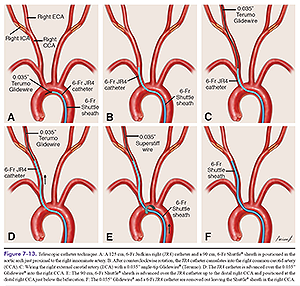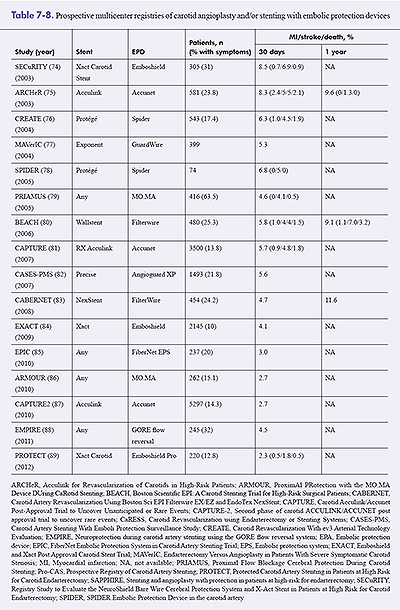Vascular Interventions Textbook
Step-by-step technique
This is a non-commercial book and only for academic purposes.





Carotid and Peripheral Vascular Interventions Textbook
Step-by-step technique
Highlights:
- A practical guide to the full range endovascular interventions: Carotid and peripheral vascular diseases. Describing step-by-step technique to guide practitioners to perform the procedures with comprehensive knowledge and skills, based on the author’s experience.
- Each chapter of carotid and peripheral intervention territory includes indications, vascular anatomy, vascular access, diagnostic angiography, devices, interventional technique, updated relevant guidelines, pharmacotherapy, and post procedural care.
- Selective cases with outstanding illustrations highlighting relevant anatomy, various diagnostic imaging, and step-by-step technique.

Thosaphol Limpijankit, MD, FACC, FSCAI
Associate Professor
Department of Medicine, Division of Cardiology
Faculty of Medicine Ramathibodi Hospital
Mahidol University
Bangkok, Thailand
About the Author
As a cardiologist, one is more readily able to identify patients with concomitant carotid and peripheral arterial diseases. It has been our experience that the technical skills necessary to perform coronary angioplasty are transferable to the peripheral vasculature. There are compelling reasons for cardiologists to undertake a more global approach with continuing care to the patient with atherosclerotic coronary artery disease.
In 2001, after finishing a 2-years interventional cardiology training program with George W. Vetrovec (Medical College of Virginia, Virginia Commonwealth University), who was the instrument for me to become the interventional cardiologist and who contributed greatly to my career, I decided to apply for a carotid and peripheral intervention training program before returning to my home country, Thailand. During that period, it was challenging to identify a formal training program in carotid and peripheral interventions. The reason was not many Heart and Vascular Institute Centers in the United States had expertise in this area, nor were there sufficient large number of cases for conducting a training program. However I fortunately, was honoured to be given the opportunity to work with professionals in this field: Gary S. Roubin, Sriram S. Iyer and Jiri J. Vitek at Lenox Hill Hospital, New York in 2001-2002. Those interventionists have been well recognized globally for their pioneering work and significant contribution to the areas of angioplasty and stenting for the treatment of extracranial carotid arteries and peripheral arterial diseases. Spending two years training at Lenox Hill Hospital, my technical skills and knowledge advanced tremendously. They all indeed were mentors who prepared me to return to Thailand with skills that would benefit patients in my country. I will always be grateful for the time spent with them as it has helped me serve the people in my country with advanced knowledge in this area.
When I returned to Thailand in 2003, I started to commence performing carotid and peripheral interventions along with my colleague, Dr. Pavit Pienvichit, who is a fully-trained interventionist from the United States. As a result, with the assistance of our catheterization laboratory personnel, we were then able to establish the patient service and formal training program related to carotid and peripheral vascular interventions at the Faculty of Medicine Ramathibodi Hospital, Mahidol University. This has also contributed to all of us evolving and able to serve the community better with all the knowledge and research we ourselves have conducted. We had further opportunity to be proctors of Mentice simulator training program (organized by Cordis, Johnson and Johnson) in Malaysia many times during the period 2008-2013. Trainees came from diverse subspecialties across Southeast Asia. We also got the opportunity to perform on-site demonstrations and teach with hands-on experience for physicians from Thailand and overseas. In 2008, my first book “Manual of carotid and peripheral vascular intervention, step-by-step technique” was published, which served as a basic guide for interested interventionists who were just entering this field.
Currently carotid and peripheral interventions have become more popular and are routine procedures in hospitals. The physicians performing the procedures are from various specialties such as neuroradiologists, interventional radiologists, vascular surgeons, and interventional cardiologists. Given the diversified background and better collaboration of those specialists, this enables a better level of care to the patients.
To date, however, there are still limitations and challenges in setting up a formal training program in Thailand, and perhaps in other countries worldwide are also facing the same challenges. I hope that this textbook which has been written based on knowledge acquired from my experience with patients over 20 years, will provide fundamental knowledge, step-by-step technique, as well as technical pitfalls and become a valuable asset which will contribute to guiding physicians who will become experts in this needed field.
Contents of the Textbook
CONTENTS
Section I. Evolution of Interventions, Training and Credentialing
Section II. Interventional Principles and Antithrombotic Therapy
Section III. Cerebrovascular Intervention
Section IV. Upper Extremity Intervention
Section V. Renal Artery Intervention
Section VI. Lower Extremity Intervention
Section VII. Venous Intervention
Sample Chapters: Inside the Textbook
Sample of Illustration












